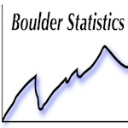- JMP will suspend normal business operations for our Winter Holiday beginning on Wednesday, Dec. 24, 2025, at 5:00 p.m. ET (2:00 p.m. ET for JMP Accounts Receivable).
Regular business hours will resume at 9:00 a.m. EST on Friday, Jan. 2, 2026. - We’re retiring the File Exchange at the end of this year. The JMP Marketplace is now your destination for add-ins and extensions.
- Subscribe to RSS Feed
- Mark Topic as New
- Mark Topic as Read
- Float this Topic for Current User
- Bookmark
- Subscribe
- Mute
- Printer Friendly Page
Discussions
Solve problems, and share tips and tricks with other JMP users.- JMP User Community
- :
- Discussions
- :
- Re: Hiding graph in Bivariate analysis?
- Mark as New
- Bookmark
- Subscribe
- Mute
- Subscribe to RSS Feed
- Get Direct Link
- Report Inappropriate Content
Hiding graph in Bivariate analysis?
Hello,
I have a script which include a Bivariate analysis, however I would like to have just the Linear Fit statistics table show up, and hide the graph itself.
this_dt << Bivariate(
Y( Column(this_dt, this_cols[j])),
X( :"Time (Months)" ),
By( :"Lot Number" ),
Fit Line,
Invisible
)As you can see I included the Invisible condition in Bivariate( ), but the graph is still showing up in my JRN file, and I am not sure how to get rid of it.
Accepted Solutions
- Mark as New
- Bookmark
- Subscribe
- Mute
- Subscribe to RSS Feed
- Get Direct Link
- Report Inappropriate Content
Re: Hiding graph in Bivariate analysis?
Thank you for your suggestion.
I also found an alternative solution which I can write within Bivariate().
SendToReport( Dispatch( {}, "", ListBox, {Visibility( "Collapse" )} ) )The above line hides the box containing the Bivariate plot.
- Mark as New
- Bookmark
- Subscribe
- Mute
- Subscribe to RSS Feed
- Get Direct Link
- Report Inappropriate Content
Re: Hiding graph in Bivariate analysis?
biv = this_dt << Bivariate(
Y( Column(this_dt, this_cols[j])),
X( :"Time (Months)" ),
By( :"Lot Number" ),
Fit Line,
Invisible
);
biv rep = biv << Report;
// one way
biv rep[PictureBox(1)] << Delete;
// other way
biv rep[PictureBox(1)] << Visibility( "Collapse" );- Mark as New
- Bookmark
- Subscribe
- Mute
- Subscribe to RSS Feed
- Get Direct Link
- Report Inappropriate Content
Re: Hiding graph in Bivariate analysis?
Thank you for your suggestion.
I also found an alternative solution which I can write within Bivariate().
SendToReport( Dispatch( {}, "", ListBox, {Visibility( "Collapse" )} ) )The above line hides the box containing the Bivariate plot.
- Mark as New
- Bookmark
- Subscribe
- Mute
- Subscribe to RSS Feed
- Get Direct Link
- Report Inappropriate Content
Re: Hiding graph in Bivariate analysis?
- Mark as New
- Bookmark
- Subscribe
- Mute
- Subscribe to RSS Feed
- Get Direct Link
- Report Inappropriate Content
Re: Hiding graph in Bivariate analysis?
Hello,
I am using the Bivariate function just to generate Linear fit statistics for my main graph. I am using V List box and H List box to generate a plot using graph builder, and then Bivariate to generate the linear fit statistics for each lot number in an H List box beside the plot. Each graph builder plot may have up to 20-30 Bivariates associated with it.
If you can suggest a better alternative, I would love to hear it! Below is an example of my script, sorry if it is confusing, I had to hide specific file paths and columns names.
// Generating Graphs
setup = Function({dt}, {Default Local},
dt = Open ( "file.JMP" );
dt << Select Where(:"column example" == "string example" );
cfg1 = EvalList({dt << Data View, { "col1", "col2", "col3", "coln"}});
EvalList({cfg1});
);
build_graphs = Function({cfgs}, {Default Local},
win = New Window( "window", vlb = V List Box() );
ncfg = NItems(cfgs);
for(i = 1, i <= ncfg, i++,
{this_dt, this_cols} = cfgs[i];
ncols = NItems(this_cols);
for(j = 1, j <= ncols, j++,
vlb << Append(H List Box (
this_dt << Graph Builder(
Show Control Panel( 0 ),
Size( 600, 400),
Variables(
X( :"X axis" ),
Y( Column(this_dt, this_cols[j]) ),
Overlay( :"overlay" )
),
Elements(
Points( X, Y, Legend(12) )
),
SendToReport(
Dispatch(
{},
"",
ScaleBox,
{Format( "Fixed Dec", 10, 0 ), Min(0), Max(50), Inc(6),
Minor Ticks(0)}
)
)
),
this_dt << Bivariate(
Y( Column(this_dt, this_cols[j])),
X( :"X axis" ),
By( :"overlay" ),
Fit Line,
SendToReport( Dispatch( {}, "", ListBox, {Visibility( "Collapse" )} ) )
)
));
)
);
win
);
dt = Open ( "file.JMP" );
cfgs = setup(dt);
Show(cfgs);
win = build_graphs(cfgs);
Show(win);
win << Save Journal("file.jrn", embed data(1));
Recommended Articles
- © 2025 JMP Statistical Discovery LLC. All Rights Reserved.
- Terms of Use
- Privacy Statement
- Contact Us

